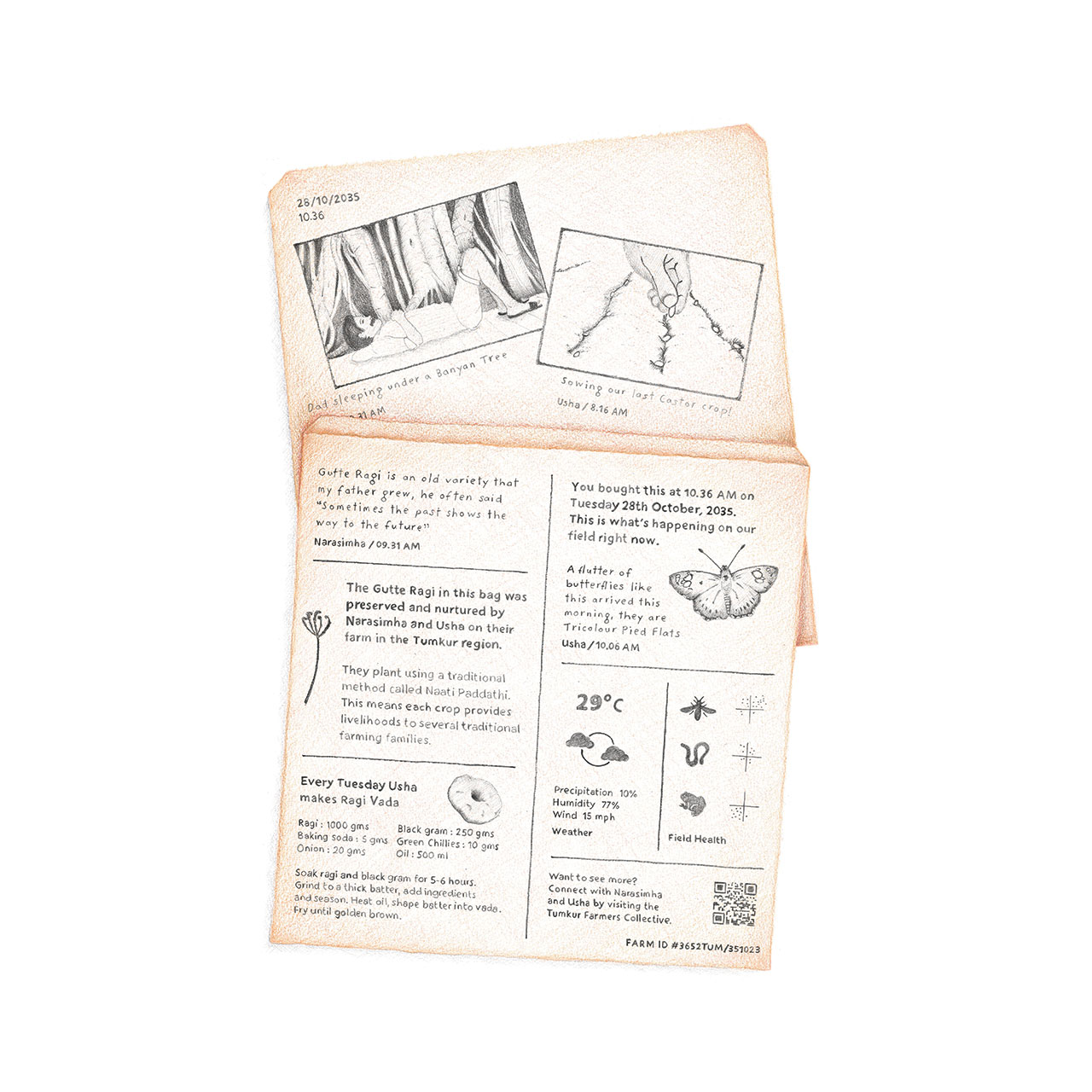Artefact 03
Drishti 2040 Report
New technologies enable the Soligas to document and record their way of life without forcing them to make changes to their behaviour. This data is owned by the Soligas and ensures that their engagement with external researchers, scientists, and policy makers is equitable. Over time, the aggregated data highlights their conservation practices and makes clear what the Soligas have long argued for: legitimising indigenous knowledge and their approach to forest stewardship to form the foundation of a new approach to conservation and regeneration in Karnataka.
Roopa, Ahmed and Nagamma are at the centre of a circle of researchers, policy makers and tribal leaders. The group is putting the finishing touches on a report that details new approaches to biodiversity conservation. The report itself is the culmination of two decades of collaboration between the Government of Karnataka and the Soligas and is due soon.
It’s a big deal for Roopa, the newly appointed director of the Socio-biodiversity department at Bangalore University, and for Ahmed, the current Principal Chief Conservator of Forests. Nagamma is more relaxed – she has succeeded in ensuring that Soliga knowledge is accepted and revered beyond the learning grounds of BR hills. And, frankly, though she knows the report is important to the government, she is more interested in the new song she has been working on.
“OK, so let’s get this in the right order!” Roopa cries out over the buzz. Behind her, on the wall is a thicket of sticky notes. Ahmed stoops to pick up a few notes that have fluttered on to the floor. “So we’re starting with Nagamma’s paper on ‘Soliga Ways of Seeing’ and then moving on to our 2025 ecosystem project?” A woman with small rectangular glasses steps forward from the circle of participants and Nagamma turns to her. “What have we missed, Deepa?”, “I’m wondering about the piece detailing the shift from researching Soligas to respecting them.” The room is quieter now as she looks around. “We need to make that much more prominent”. Ahmed nods, “Yes, of course, you’re right. Let’s put that in around 2023.” Before continuing, he shifts his attention to Nagamma, “And we can follow that with your justice and equity work around life- centred design policies and practices”. Nagamma smiles, a new melody forming in her mind. “Sure Ahmed, that sounds great.”







